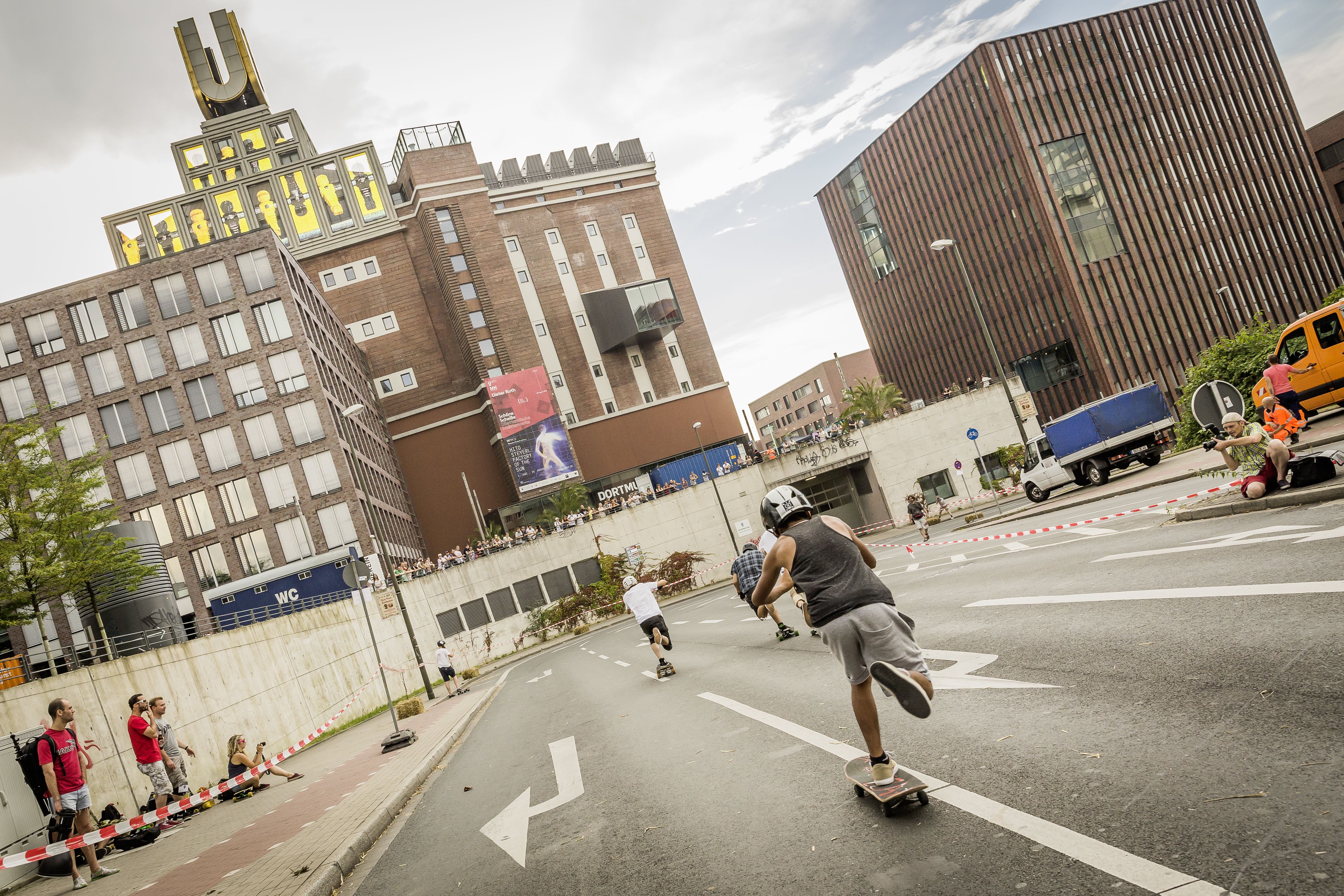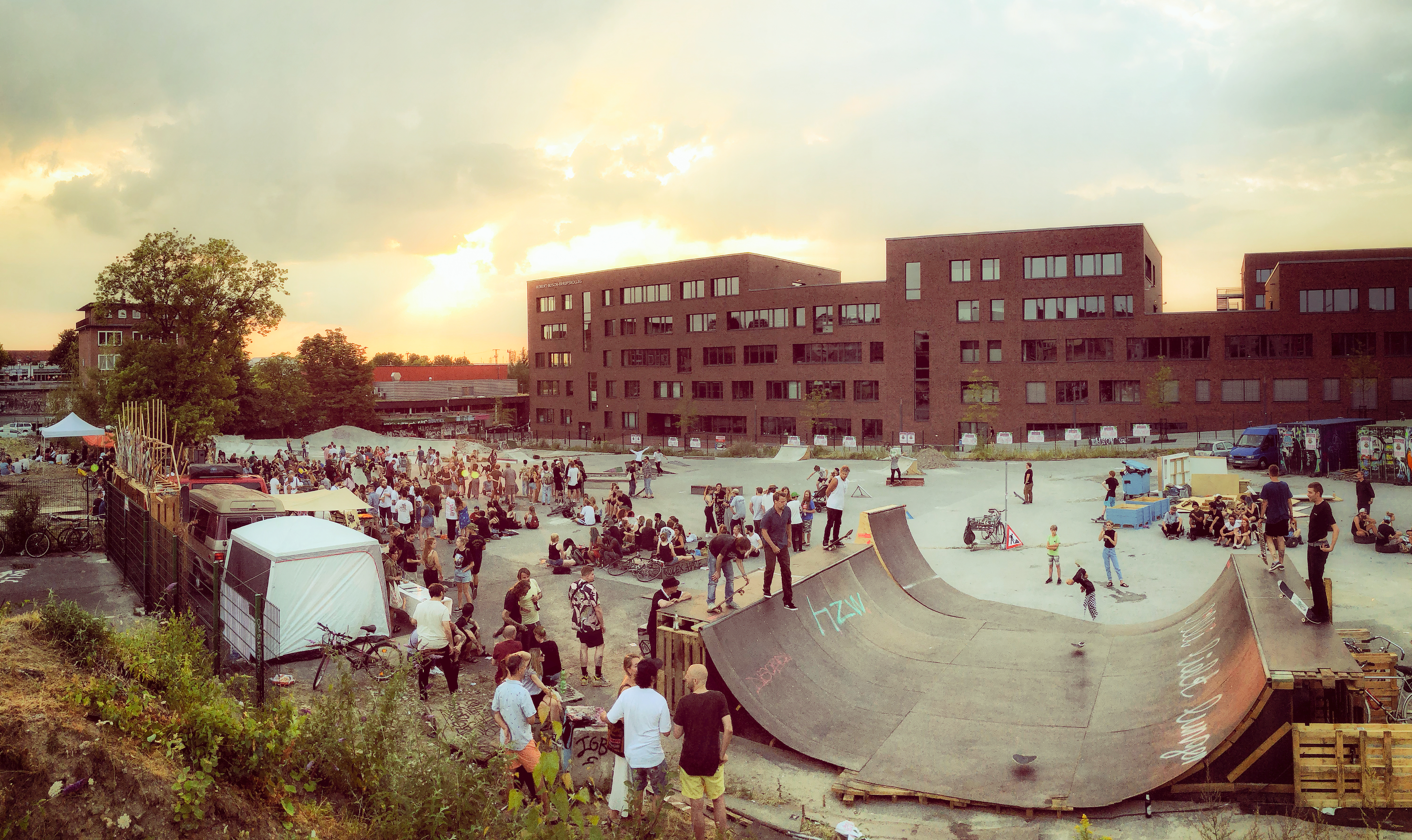WHO
The site was owned by the City of Dortmund via the city’s Real Estate Agency but the skate park itself was managed and operated by Skateboardinitiative Dortmund, also known as the Association for the Promotion of Youth Culture. A synergy between the city government and the Skateboardinitiative was created when a city official approached them with the offer of using the empty lot.
The interaction between the initiative and the city was a perfect example of how collaborative city-making should look like. It carried forward the statement that it is sometimes good for planning and order to take a back seat in order to foster genuine citizen participation and creativity, as opposed to the participation that stems from top-down processes.
The operations and development of the skate park were in large part financed by the Skateboardinitiative itself, which, as a well-established association, had the economic means to finance it and to acquire supplemental funding through the city, and enjoyed the support of its members and external donors.
Additional stakeholders and supporters of the skate park were UZWEI Youth Cultural Education Centre, which is located in the Dortmunder U and would eventually collaborate with the skate park, as well as with the managers of a meanwhile use in Bilbao, Spain, for the creation of the exhibition called “The Art of Skate.” The exhibition was part of the EU “Smart Places” project along with Azkuna Centroa, a cultural centre in Bilbao with a similar cultural heritage as Dortmunder U.
Other identified actors were the administration of the two vocational schools that were north of the skate park, the organisation “The Urbanists,” Dortmunder U’s administration, and the Real Estate Agency of Dortmund.
WHAT
Skate Park Utopia was located at the back of Dortmunder U. Being in Dortmunder U’s vicinity, the skate park enjoyed a very central location in relation to the city. It was often described as a space that enjoyed unusually prolonged times of uninterrupted sunshine, which contributed to its popularity as a hangout place.
The skate park was first launched in May 2018, initially lent by the city for a span of 3 months. The user agreement that allowed the initiators “Skateboardinitiative” to host the park was adapted and extended for approximately the next 2 years, until its termination in June 2020.
The most noticeable event that the park was part of was “the Art of Skate" exhibition, which was planned and done in collaboration with UZWEI Youth Cultural Education Centre and members from the Bilbao skateboarding community. The exhibition was reported to have created a lot of interest and brought a lot of visitors to Dortmunder U. It managed to give visibility to a group which, as described by the interviewees, was sometimes misunderstood.
HOW
The main activity of the skate park was to provide an open space with skating structures that users could enjoy. The inception, development, and operation of the park were highly participatory and horizontal. This meant that the constructions built in the lot were often the result of members’ initiative and their collaboration with one another. Though this was the general dynamic of the park, some of the structures were actually professionally built, using concrete instead of wood or semi-fixed structures, falling under the supervision of the Initiative’s board itself. Aside from the skating structures, Skateboardinitiative built a bar hut, a stage, and overseas shipping containers as areas for safe storage.
The skate park was a place where one could go and exercise the creative liberty to build and test whatever they pleased. It was also popular as a meeting place where students and members of the creative industry often met. Thanks to the stage they had built, the park sometimes hosted concerts and similar cultural events, though impromptu music sessions would also be commonplace. Aside from these occurrences, the park also hosted bigger events; one of them being an event organized by the Skateboardinitiative every year.



REFERENCES
Castro, A. and E. Wascher (2021), ‘Dortmunder U and Union Quarter - The Role of Meanwhile Uses in Urban Regeneration: T-Factor Advanced Case Study Report’, Working Paper, Technische Universität Dortmund, at http://dx.doi.org/10.17877/DE290R-22049 View File